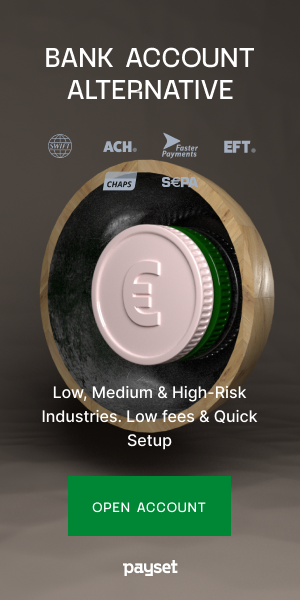
Whale Watching: Which Crypto Wallets Have the Biggest Balances?
Jun 19, 2020, 9:39PM by Mike Dalton
by Mike Dalton
Bitcoin whales hold large amounts of cryptocurrency. Who are they, and why do their actions matter?
Crypto "whales" are individuals and organizations that hold a large amount of cryptocurrency, usually stored in a single wallet or address.
Because Bitcoin and most other blockchains have public ledgers, tracking sites and analysts can monitor the actions of whales. This ensures that big companies and project leaders stay accountable to the public and use their funds properly.
There are several different types of whale, and each behaves differently.
Major Exchanges
Often, crypto exchanges hold a large amount of Bitcoin because they hold funds for thousands (or even millions) of different users.
Huobi, for example, currently owns the largest Bitcoin address (255,000 BTC). This is Huobi's "cold storage" address, and it does not necessarily contain all of its funds. However, it does suggest Huobi is storing most of its Bitcoin in one large address.
Bittrex, Bitfinex, and Binance also hold large wallets on that list.
Despite their large balances, exchanges may make small transactions for their users, or they may make large transfers between their own addresses. This activity does not always have a meaningful impact on the market and it is often uneventful.
Yet large transactions sometimes reflect unusual trading activity, such as massive sell-offs or artificial trading volumes. Furthermore, transactions between exchanges may reveal unspoken relationships between crypto companies.
Wealthy Individuals
Some high-profile individuals and project leaders can be considered whales.
Satoshi Nakamoto, the creator of Bitcoin, may own as much as 700,000 BTC, according to a recent analysis from BitMEX. However, assuming that is indeed Nakamoto's Bitcoin, it is spread across several small addresses—not one large "whale" address.
Vitalik Buterin, the founder of Ethereum, has also revealed his main address. It currently holds 345,000 ETH and is the 21st largest Ethereum address.
Jed McCaleb, the co-founder of Ripple, currently holds about 4.4 billion XRP across four different addresses, according to some estimates. The rate at which he can sell XRP is limited by a settlement with Ripple, as explained by WhaleAlert here.
Just like any other wealthy investor, project leaders can sell off their holdings and impact the crypto market, so their actions are worth watching.
Giant Stablecoins
Stablecoin projects like Tether (USDT) are in a unique position: they typically create and destroy tokens in large quantities several times a day.
Because USDT tokens are tied to a reserve of fiat currency, USDT must be minted and burned as money enters and leaves the reserve. Furthermore, USDT exists on multiple blockchains, and it must be minted and burned as it moves between chains.
In other words, the amount of tokens created and burned by Tether often "zeroes out," and large transactions within stablecoin projects can mean nothing at all.
Nevertheless, stablecoins should be monitored. In July 2019, Tether accidentally minted $5 billion of USDT—a mistake that could have been overlooked with smaller amounts.
Similar concepts apply to other centrally-issued stablecoins like USD Coin, Paxos Standard, Binance USD, TrueUSD, Gemini Dollar, and HuobiUSD.
Criminal Activity
Criminal activity has also led to the creation of several large wallets.
One of Bitcoin's formerly largest addresses resulted from the shutdown of Silk Road, an illegal marketplace. The FBI seized the site's funds in 2013 and combined them into a single address with 144,000 BTC. That balance has been split up since then.
Other large addresses contain funds from unsolved crimes; the fifth largest Bitcoin address currently contains funds stolen from Mt. Gox in 2011.
More recent crime has also produced whales. Plus Token, a now-defunct Ponzi scheme, currently holds the 8th largest Ethereum address (789,500 ETH).
Whales that have earned their crypto from crime can be quite persistent. For instance, WhaleAlert.io is still tracing funds stolen from Bitfinex in 2016, three years after the fact. It is also tracing funds stolen from UpBit six months after that hack.
These addresses cannot be shut down. However, by following "whale alerts," exchanges can blacklist dangerous addresses, and users can avoid interacting with them.
Early Adopters
Some large Bitcoin addresses belong to early adopters, who were able to obtain sizeable amounts of cryptocurrency thanks to low market prices.
Right now, the 25th and 26th largest Bitcoin addresses contain about 30,000 BTC, and they have held that balance since 2010. Likewise, the 41st largest Bitcoin address has held 20,000 BTC for the past ten years.
These users probably earned their Bitcoin by mining it. Early peer-to-peer transactions may have also contributed to their balances, along with purchases from early exchanges like BitcoinMarket.com and Mt. Gox.
Early adopters tend to hold onto their Bitcoin. Sometimes they do move funds, though: this May, one 2009-era miner sold off some of their Bitcoin.
Why Do Whales Matter?
"Whale watching" is largely about transparency and trust.
Sites like WhaleAlert.io track companies so that the crypto community can stay informed. This information helps investors choose which entities to trust with their crypto, and it lets them make informed investment decisions based on market activity.
Public perception can also motivate companies to stay honest and act ethically—even if users do not actually have direct control over those companies.
That said, large transactions are not necessarily bad or even unusual, and it usually takes input from market analysts to identify meaningful whale activity.
Disclaimer: information contained herein is provided without considering your personal circumstances, therefore should not be construed as financial advice, investment recommendation or an offer of, or solicitation for, any transactions in cryptocurrencies.

















